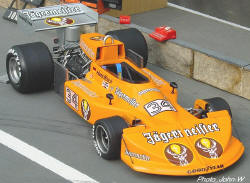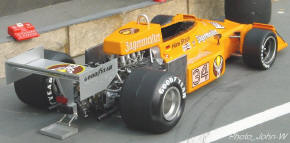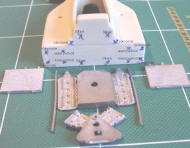|
Formula one |
|||
|
March-Ford 761/2 Jägermeister Orange House, 1/20 scale |
|||
|
by John Horst © 2005 Modeler Site |
|||
|
Legal Notice No material from Modeler Site any Web site owned, operated, licensed, or controlled by Damian Covalski may be copied, reproduced, republished, uploaded, posted, transmitted, or distributed in any way, except that you may download one copy of the materials on any single computer for your personal, non-commercial home use only, provided you keep intact all copyright and other proprietary notices. Modification of the materials or use of the materials for any other purpose is a violation of Damian Covalski's copyright and other proprietary rights. Read More here > Legal notice In 1969 March Engineering was established with the intention to become a racing car production business providing chassis for customers competing in all racing categories. Each of the four founders chipped in £2,500 to form a company that was to become, with the exception of Formula One, more successful in more classes than any other manufacturer ever.
The four founders, Max Mosley, Alan Rees, Graham Coaker and Robin Herd, each had a specific area of expertise. While Max Mosley looked after the commercial side of the business, Robin Herd did the design, Alan Rees managed the March racing teams and Graham Coaker oversaw the production in their Bicester factory. March changed and grew over time and had divisions known as March Engineering, March Racing, March Wind Tunnels, March Engineering Projects, Comtec, March Grand Prix, March F1. The well known March logo was designed by Graham's wife Carol Coaker and served for the next 20 years. After building a Formula 3 car in 1969, the company turned to F1 in 1970 with the 701 chassis. That same year, Jackie Stewart gave March its first F1 victory in the non-championship Race of Champions in March and won the Spanish GP the following month. In 1976 the type March 761 (76 is the year, 1 is for formula one) was running in the formula one championship with a lot of drivers like Vittorio Brambilla, Ronnie Peterson, Hans-Joachim Stuck, Arturo Merzario and Lella Lombardi. Now the German Grand Prix 1976 was my second GP I have seen live, so my decision was very easy which version I will built, Hans-Joachim Stuck was my favorite driver and I like the Jägermeister-liqueur. The weather at this weekend was dry and wet, so the car had a lot of different aerodynamic parts, so I have decided to built a “dry” version.
The Kit
Support us ordering our notes in PDF > Here |
|||





















